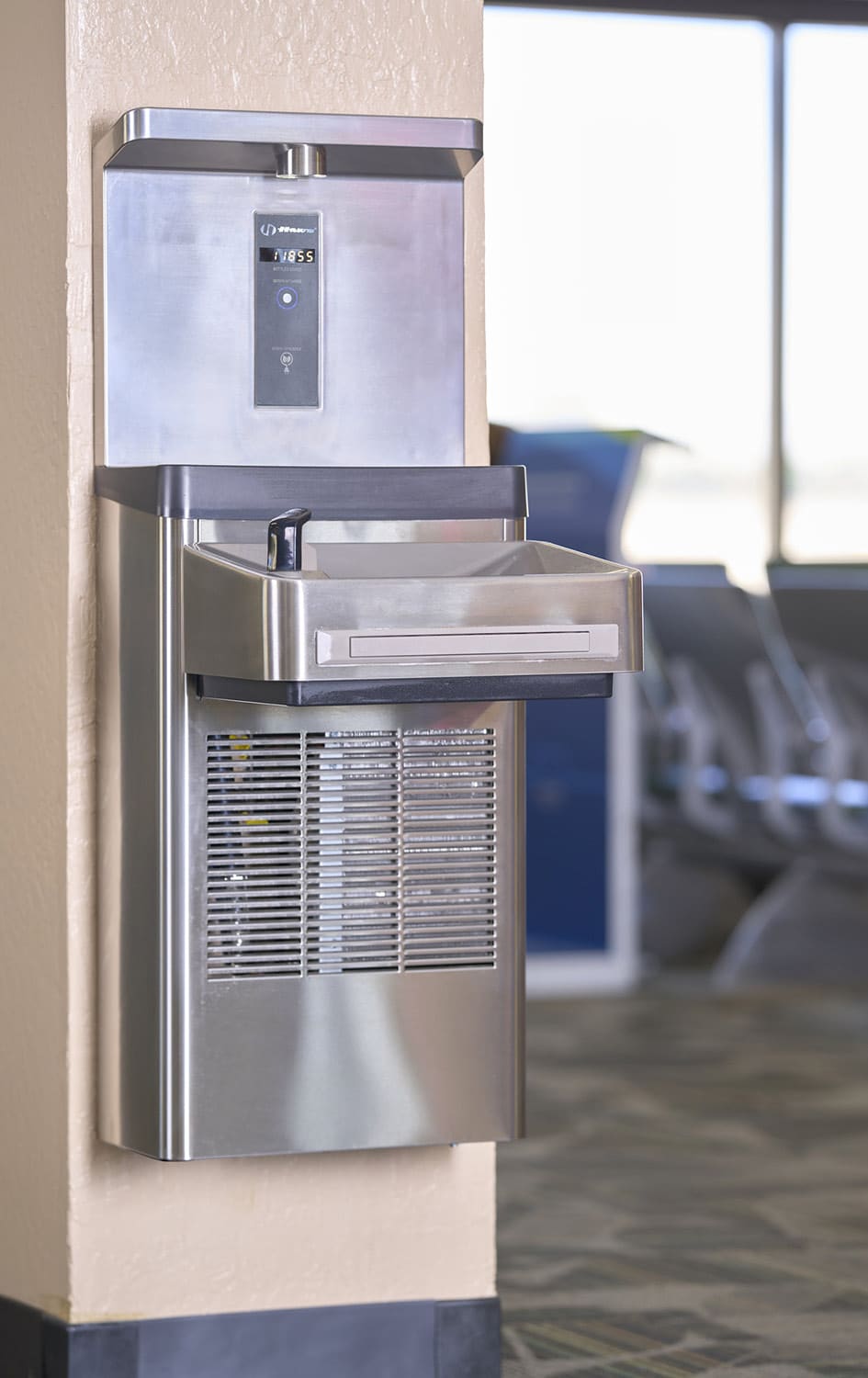Adapted from original article from Spaces4Learning
BEYOND SERVING AS A HEALTHY CHOICE FOR K–12 and higher education students, clean water offers students a sustainable and environmentally friendly option when offered in ways that reduce plastic bottle waste and consumption.
Demand for easy-to-find hydration has grown as students use reusable bottles and cups that even serve as status symbols, depending on the brand. On college campuses in particular, resources for finding hydration stations or bottle fillers — think maps and social media threads — help students quickly fill up, whether indoors or outside, as they make their way to classes or athletic practices. While the reasons for providing access to drinking water throughout K–12 and higher education campuses are many, facilities and operations managers should keep several considerations in mind when selecting and placing such systems within and around school buildings or higher ed campuses.
Free Water Required in Public Schools
Most K–12 schools are required to make free water available to students during meal times thanks to the Healthy, Hunger-Free Kids Act of 2010, which mandates that schools participating in the National School Lunch Program offer water in areas where meals are served, in part to reduce health risks and combat the childhood obesity epidemic. Beyond the cafeteria, state and local plumbing codes specify the number of drinking fountains required and their placement within school and public building settings, typically enforced during construction or building renovations.
The American Disabilities Act sets very specific placement parameters for drinking fountain and bottle fillers, requiring machines to be placed less than 48 inches off the floor. Users must be able to reach the machines from a seated position, so fountains cannot extend more than 20 inches from a wall.
Hydration May Improve Cognitive Function
“Proper hydration keeps kids performing at their best academically, [and] is the healthiest substitute for sugary drinks,” according to a report from the Harvard School of Public Health Prevention Research Center. While the report was published pre-COVID, post-pandemic sensibilities warrant larger numbers of hydration stations throughout schools or campuses to ensure students don’t congregate in large numbers around machines during lesson breaks or other high-demand times. Offering hands-free bottle fillers in classrooms keeps kids filling up safely where they learn, while also limiting the spread of germs.
Students Seek Safer, More Sustainable Choices
As awareness of the dangers of forever chemicals like PFAs and unsafe public drinking water infrastructure grows, students and their families are paying more attention to where their water comes from and its overall safety. Filtered water allows K–12 and higher education campuses to provide safer hydration options, with little maintenance required. Many devices, like the outdoor bottle fillers and electric water coolers offered by Haws, filter up to 3,000 gallons of water before requiring a filter change (lasting more than 8-12 months).
Sustainability programs can promote water consumption and support drinking fountain maintenance efforts, according to the Harvard report: “School-aged children are interested in how to conserve water, reduce waste and improve recycling. Drinking fountain projects are popular with students looking to reduce plastic bottle waste and are a great way to promote drinking water.”
“School-aged children are interested in how to conserve water, reduce waste and improve recycling. Drinking fountain projects are popular with students looking to reduce plastic bottle waste and are a great way to promote drinking water.”

Learn More
Indoor Hydration SolutionsLearn More
Outdoor Hydration Solutions


